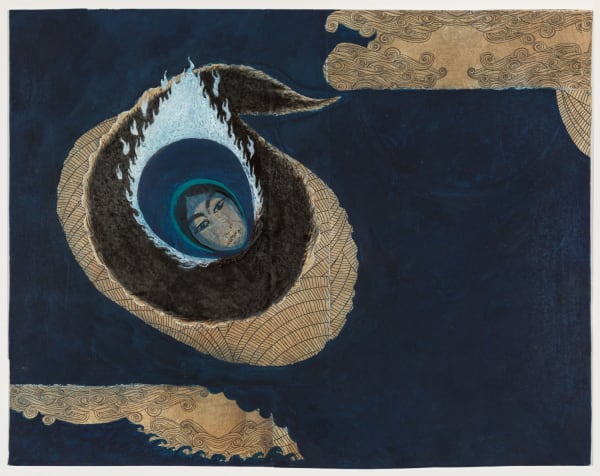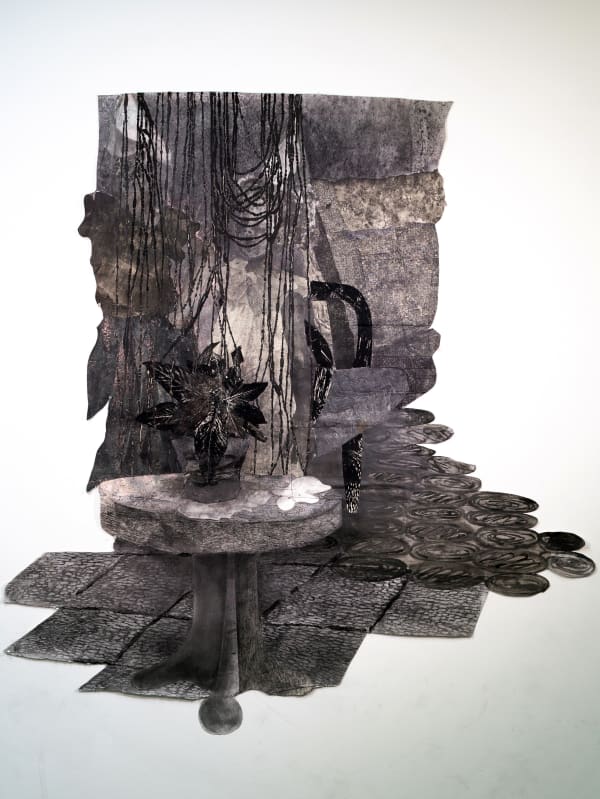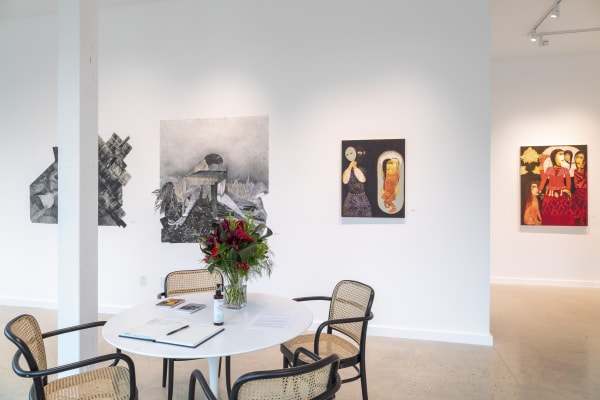UNMOORED: Deconstructing The Narratives of Self/The Other: Guest Artist/Curator: Billy Gerard Frank
“But the subject that concerns us here is that of the emotion of belonging to and anchoring in a land of origin- the at once imperturbable and unshakeable desire for a home.”
- Maboula Soumahara
Intertwined autobiographical narratives centered around culture, identity, childhood, landscapes, displacement, and exile filtered through the prism of memories collapsing present, past, and future are some of the themes and symbolisms that Samira Abbassy and Simonette Quanina grapple with in their works. Both artists are based in New York and their art practices encompass large-scale drawings, paintings, collages, sculptures, etc drawing from their place of origin and multicultural backgrounds to deconstruct and reconstruct pictorial psychological narratives that frame complex experiences and a sense of place: Samira is Iranian and grew up in England, Simonette is from the Caribbean Island of
Saint Vincent and have lived in other Caribbean Islands.
Though these artists hold a vast geographical and historical distance there are many parallels between seemingly disparate worlds. Simonette and Samira's works unfold a fable through art practices that weave more poetic, narrative, and imagery paintings and drawings, located somewhere between the mythological, fantastical, and contemporary. They meet at the intersection of their overlapping and divergent cultural backgrounds that informed their art and subjectivity, contesting gender, feminity, culture, and more.
Through fluid figuration capturing personal and intimate portraits, depicted memories, and familiar imagery; Iranian iconography, and Caribbean African Folklore references, the viewer is transported to this visual world in which both dynamic histories of Iranian and Caribbean culture can simultaneously exist in the same space. There is an intimacy they both hold with their respective visual perspectives informed by their unique experiences of the diaspora and exile.
Samira continues to probe the central themes of (religion, violence, madness, and gender) in her work, capturing the intangible, reshaping images of home and self, when one finds themselves socially and/ or physically exiled. She connects back to her natal land by weaving images of Iranian iconography and effigy, disembodied female figures that are vessels of stoicism and fragility. A collage depicts multiple histories and lived realities of her community that exist and are represented through a central female figure she uses to speak as a point of contact for all. Though the work does not address the current issues in Iran, they are deliberately nuanced and open to multiple readings, settling instead toward universal
conditions and modernity.
Through dark, borderless illustrations, obscured faces, and abstract visions, Simonette connects both physically and spiritually to her origins. Her multi-layered drawings peel back the settings of all her past homes in the West Indies, South and North America. She uses the tales of Afro-Caribbean Anansi and folklore that collide with other personal memories interwoven with urban landscapes and verdant vegetation to recreate dreamlike, dense graphite imagery. Her installations puzzle together a sense of past and temporality. This visual, liminal room of constructed blackness is at once a space for hope as well as grief and remembrance.
Both artists are members of the Elizabeth Foundation for the Arts (EFA) established in 1993 and Samira Abbassy is one of the co-founders.




































